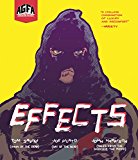| Reviews & Columns |
|
Reviews DVD TV on DVD Blu-ray 4K UHD International DVDs In Theaters Reviews by Studio Video Games Features Collector Series DVDs Easter Egg Database Interviews DVD Talk Radio Feature Articles Columns Anime Talk DVD Savant Horror DVDs The M.O.D. Squad Art House HD Talk Silent DVD
|
DVD Talk Forum |
|
|
| Resources |
|
DVD Price Search Customer Service #'s RCE Info Links |
|
Columns
|
|
|
Effects
1979's Effects, made by and starring several of George Romero's Pittsburgh alumni, was only briefly seen at a few film festivals after its completion and then languished in obscurity until its 2005 release on DVD. The American Genre Film Archive (AGFA, not related to the Belgian company that made actual film) has now released the movie with most of the DVD's extras on Blu-Ray. On paper, the movie sounds intriguing- the back cover summarizes it being about "a group of coked-up filmmakers" who make a low-budget slasher movie whose plot seems to be about a woman who thinks her husband is trying to kill her. But then it turns out that someone is REALLY trying to kill the cast and crew and get all of that on film. Effects however doesn't present the story that clearly.
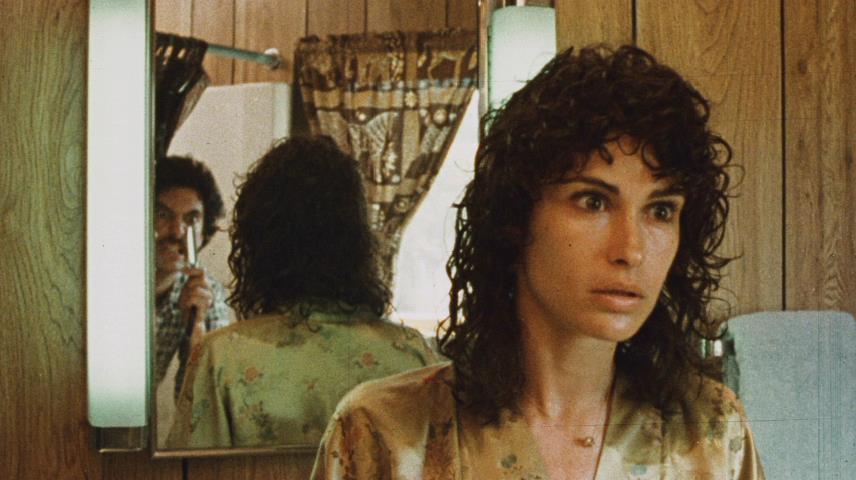
What makes the movie hard to follow is similar to how a few other movies about the making of movies have presented their narratives: Most of the time it's difficult to tell whether what we're watching is part of the movie being shot in the story, or if it's something that is supposed to REALLY be happening. The first time Effects does this is good enough for a laugh, when it opens on what turns out to be a scene in the fictitious film being shot, but as the film progresses this happens so many times that one loses track and in my case I simply stopped caring. The primary cast includes Joe Pilato as cameraman Dominic, gaffer Celeste (Susan Chapek) who STILL doesn't clearly explain here what exactly it is a gaffer does, and director Lacey (John Harrison) who's the oddest character of the bunch often showing little emotion in anything he says. Legendary makeup artist Tom Savini not only does the special effects here but also appears as Nicky who does little more than goof around on the set. One scene he appears in is a gathering at a bar that ends in a fight, which on first viewing looked so silly that I thought the fight was all staged as part of the movie being shot but it in fact seems intended to have been taken seriously.
The turning point in Effects is when Lacey gathers with Dominic and a few others after hours and after partaking in some drugs brings out a black and white 16mm film that appears to show a woman being killed. On screen it looks quite fake, but Dominic is quite traumatized after seeing it and wonders if he's about to witness something similar. Meanwhile there's a few scenes in a TV production studio where Lacey is directing a crew of hidden VIDEO cameras, which in 1979 likely cost a bit of money (the film camera being used on the fictional movie is 16mm, due to the established low budget.) While this turns out to be where all of the would-be real-life killing is being documented, in the context of things it makes little sense as presumably they're intending this video footage to be used in a movie, and the extras on this disc don't even fully explain it. For reference though, it's said that Effects wasn't widely seen until recently because home video was in its infancy at the time and the movie was never picked up for a release on tape. Oddly though, it had been picked up for a somewhat wide theatrical release by studio International Harmony in early 1980 but that fell through after the company went under- International Harmony released the 1976 sketch-comedy film Tunnel Vision which just happened to have been one of the first releases on Charles Band's MEDA label in 1978, the first non-porn independent (not connected to any major studio) video company.
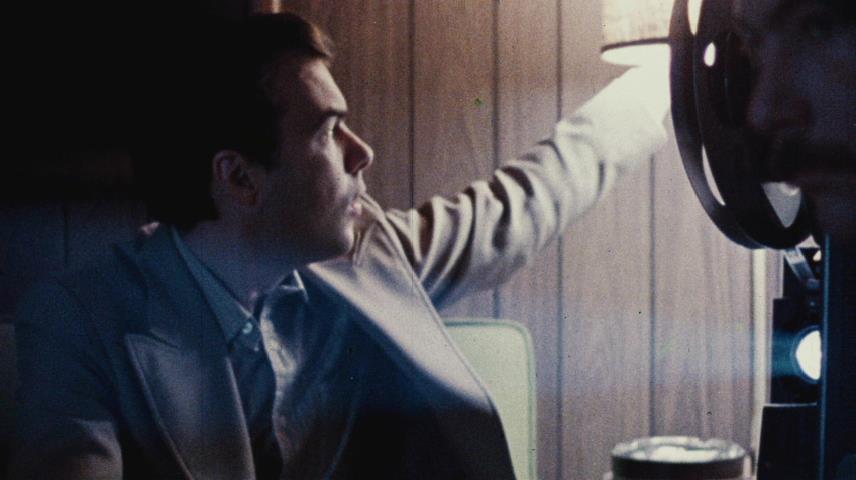
Oh, we need to talk about the film print used here. The disc's documentation states that this was scanned from "the only 35mm theatrical print in existence" but that makes the print's prior treatment all the more shameful. Having worked in the 1990s as a theater film projectionist, I quickly learned how film prints can be damaged and how important it is to make sure that you don't cause it yourself. Running throughout the print here is a series of diagonal scratches, which were likely caused by someone misthreading the film on a platter (a large device used by most multiplexes up until the digital switchover to run an entire film on one projector mostly unattended without manually changing reels) and having it drag on a surface. If this were truly one of the only prints of this movie ever made, it obviously should not have been treated so carelessly- now the damage caused by one projectionist possibly decades ago has been preserved in high definition. It's undoubtedly the worst-condition film element I've seen on Blu-Ray, but now that film has mostly disappeared from theaters I at least now have this as a reminder of avoidable print damage that unfortunately was common at most multiplexes up until the last days of film projection.
Like the story's fake slasher movie, Effects itself was initially shot on 16mm and blown up to 35mm for theatrical showings, resulting in more film grain than usual. Many scenes taking place in the dark are poorly lit as well, due to the low budget. At the very least, the transfer is well-focused and presents everything as best as possible given the production itself and the condition of the film print used.
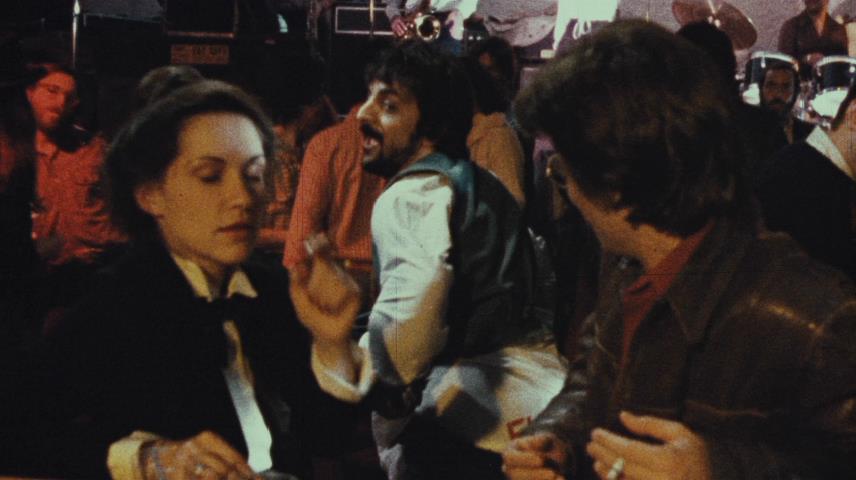
While the liner notes indicate the soundtrack as "stereo" this is obviously a mono track, not surprising at all. The film print's optical sound track has still been transferred to the Blu-Ray (in 2-channel DTS Master Audio) with the equipment in stereo mode however- while film sound processors have a "Mono" setting that you're supposed to use when running mono soundtracks, I've still enjoyed the effect they produce when ran in stereo, most notably background noise varying from the left and right channels. The film's audio itself remains centered as it should although it unavoidably spills over as 'crackling' in the other channels if you're listening for it; as with the picture overall quality isn't spectacular but at least doesn't suffer as much from the damaged print. Dialogue (which seems to have been recorded in real-time and not ADR'd later) is a bit hard to understand at times, adding to the difficulty I had in following the story, but at least hearing-impaired subtitles have been included.
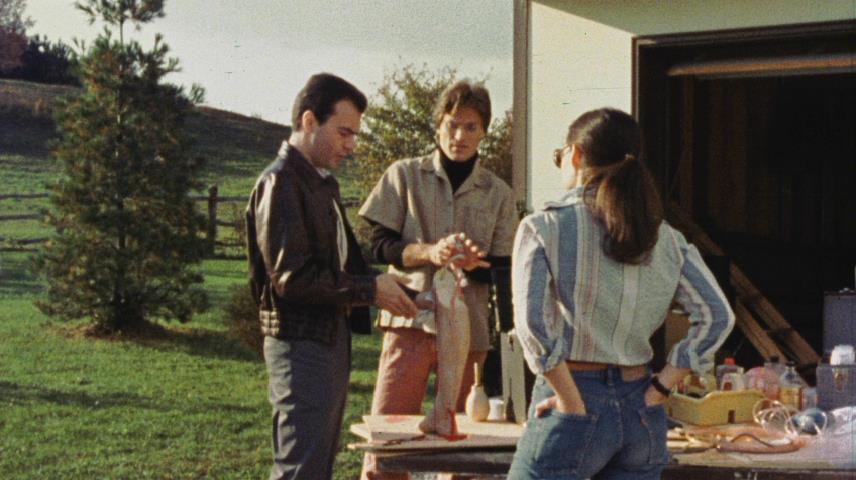
The "Coked-Up Extras" include a commentary track from the previous DVD release recorded around 2005 with director Dusty Nelson, editor Pasquale Buba and actor John Harrison (who also did the film's music) conversing rather informally. They mostly discuss the technical details including adequately lighting many of the dark scenes with what they had available- they don't discuss a lot about the story (I was quite frustrated that they didn't explain the video crew a bit more, other than say that they borrowed a friend's video production studio for those scenes) but do acknowledge that it is a bit difficult in some parts to tell what's supposed to be "really" happening vs. parts of the movie-within-the-movie.
A lengthy documentary called "After Effects" made by Michael Felsher for the 2005 DVD is also included which has the cast and crew looking back on making the movie and some of their other early efforts- they along with George Romero paid a lot of their bills by making TV commercials and industrial films, a few of which are briefly excerpted and would be fun to see in their complete form. (Adam Tyner's review of the DVD mentions that a 1970s promotional film for hair care products is hidden on that disc, but it does not seem to be carried over here.) This extra includes its own commentary track from Michael Felsher, done recently for this Blu-Ray disc, where he talks about his history with different home video companies and extras that he's produced.
Two related short films are presented, both with hi-def transfers although from rather dirty and worn film elements: the artsy "Ubu" directed by John Harrison and light-hearted romantic "Beastie" from Dusty Nelson. A booklet is also included with liner notes from AGFA's Joseph A. Ziemba telling how he discovered Effects and why he's loved it ever since.
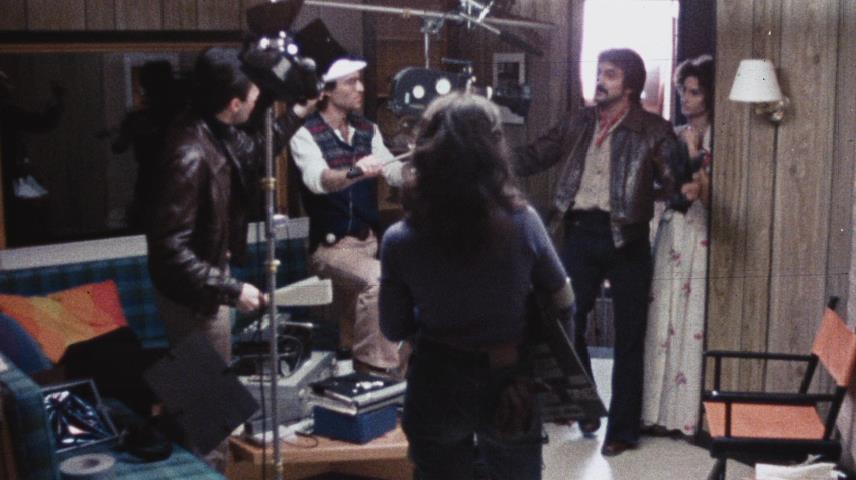
Effects is definitely a tough title to evaluate, as it undoubtedly has importance in film history- fans of George Romero's Dawn of the Dead-era output will certainly want to check this out given the talent involved. It's still hard to recommend as a movie itself however, as it's one of those that doesn't make a whole lot of sense on first viewing due to a rather disjointed narrative. Additionally the film print used was a bit hard for me to watch having a pretty clear idea as how it was damaged- I've raised quite a fuss at theaters after seeing first-run movies in this kind of condition, knowing the damage could have been prevented with just a bit of competence from those running the projectors. Someone out there will now have to live with the shame of having inflicted such damage on a movie that didn't have many prints made to begin with.
Jesse Skeen is a life-long obsessive media collector (with an unhealthy preoccupation with obsolete and failed formats) and former theater film projectionist. He enjoys watching movies and strives for presenting them perfectly, but lacks the talent to make his own.
|
| Popular Reviews |
| Sponsored Links |
|
|
| Sponsored Links |
|
|
| Release List | Reviews | Shop | Newsletter | Forum | DVD Giveaways | Blu-Ray | Advertise |
|
Copyright 2024 DVDTalk.com All Rights Reserved. Legal Info, Privacy Policy, Terms of Use,
Manage Preferences,
Your Privacy Choices | |||||||









